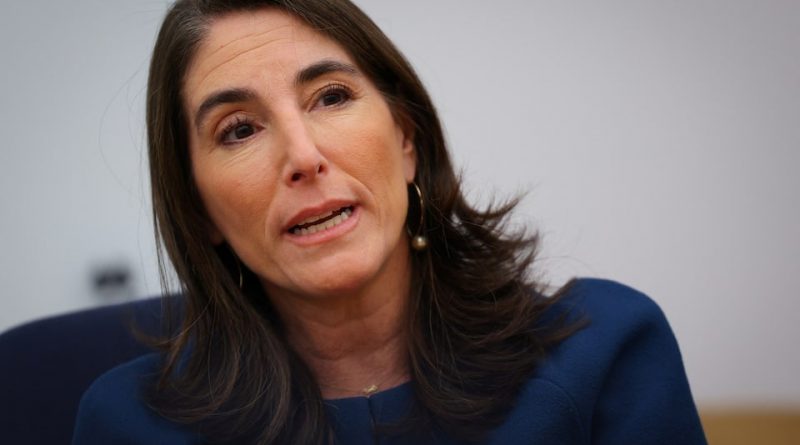Fed’s Beth Hammack Expresses Confidence in Balanced Economic Approach Amid Inflation Concerns
Federal Reserve Bank of Cleveland President Beth Hammack emphasizes the Fed’s careful balancing of inflation control and economic stability, highlighting optimism about long-term economic growth and resilience.
Federal Reserve Bank of Cleveland President Beth Hammack recently shared her views on the U.S. economy, expressing cautious optimism as the Federal Reserve continues its efforts to maintain price stability while supporting employment.
Speaking at an event hosted by the Economic Club of New York, Hammack acknowledged that while inflation remains a challenge, the Federal Reserve is closely monitoring the situation and maintaining policies designed to support sustained economic growth.
Hammack noted that the current stance of monetary policy is close to a neutral point — a level that neither accelerates nor restricts economic activity.
She stated that while there are still some pressures on prices, the U.S. job market continues to demonstrate strength and adaptability, a sign that the broader economy remains resilient despite recent inflationary trends.
According to Hammack, the Federal Reserve’s policy approach aims to balance multiple objectives: keeping inflation in check, promoting employment, and ensuring stable financial conditions.
She highlighted that the Fed’s decisions are guided by data, collaboration, and long-term economic sustainability. This measured approach reflects the institution’s commitment to maintaining the health and confidence of the American economy.
Hammack emphasized that while inflation has been a key concern for policymakers, there are encouraging signs of progress as supply chain pressures ease and consumer confidence stabilizes.
She said the Fed is continuing to assess the balance between interest rate levels and their impact on both inflation and growth, underscoring the importance of patience and precision in policy adjustments.
She acknowledged that maintaining stability in such a complex environment requires vigilance but expressed faith in the Federal Reserve’s capacity to adapt effectively.
The focus remains on steering the economy toward a soft landing — reducing inflation gradually without stalling growth or causing unnecessary disruptions in the labor market.
In her address, Hammack also pointed out that the U.S. economy has shown remarkable resilience despite global headwinds. Strong employment figures, steady consumer spending, and robust business investment all indicate that the fundamentals of the economy remain strong.
She expressed confidence that, with the right policy mix, inflation can be brought under control while preserving economic momentum.
Hammack’s comments come at a time when central banks globally are facing similar challenges of managing inflation amid evolving market dynamics.
Her perspective reflects the Federal Reserve’s balanced approach — maintaining flexibility while focusing on achieving the dual mandate of price stability and maximum employment.
The Cleveland Fed president also highlighted the importance of communication and transparency in monetary policy, emphasizing that clear guidance helps businesses and investors plan effectively.
She added that collaboration among policymakers, economists, and financial institutions plays a crucial role in ensuring steady progress toward long-term economic goals.
Overall, Hammack’s outlook reflects a positive sentiment about the direction of the U.S. economy. While acknowledging short-term challenges, she reinforced the belief that the combination of strong fundamentals, strategic policymaking, and market adaptability will ensure continued growth.
Her message of cautious optimism underscores the Fed’s confidence in navigating current economic complexities while maintaining its focus on sustainable prosperity.
As the U.S. continues to adjust to post-pandemic dynamics, inflation control, and changing global conditions, Hammack’s comments serve as a reminder of the Federal Reserve’s enduring commitment to economic stability.
The balance between managing inflation and supporting employment remains delicate, but the Fed’s pragmatic and data-driven approach continues to inspire confidence in the resilience of the American economy.



